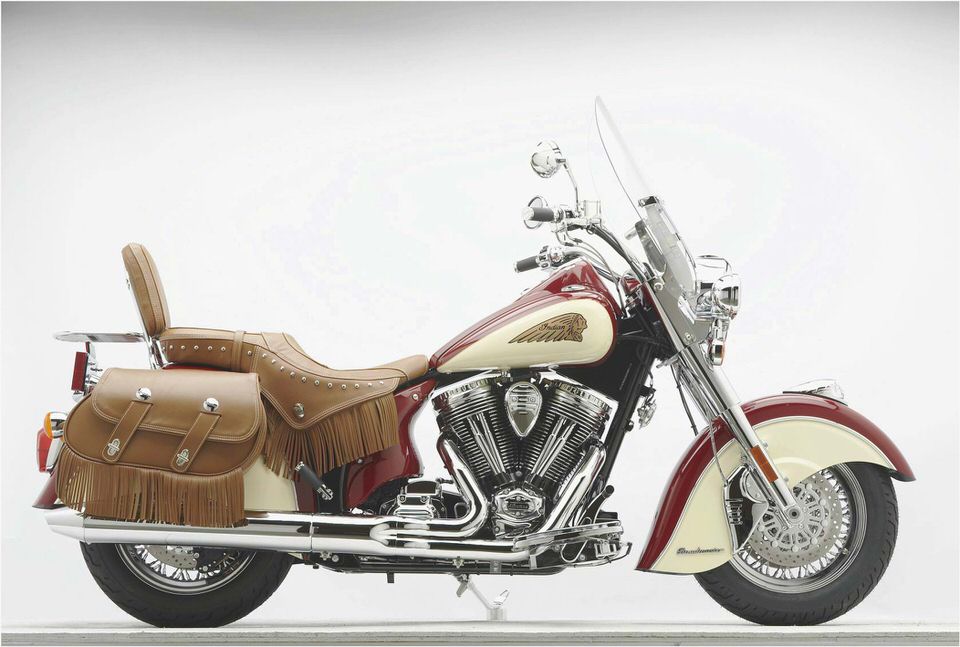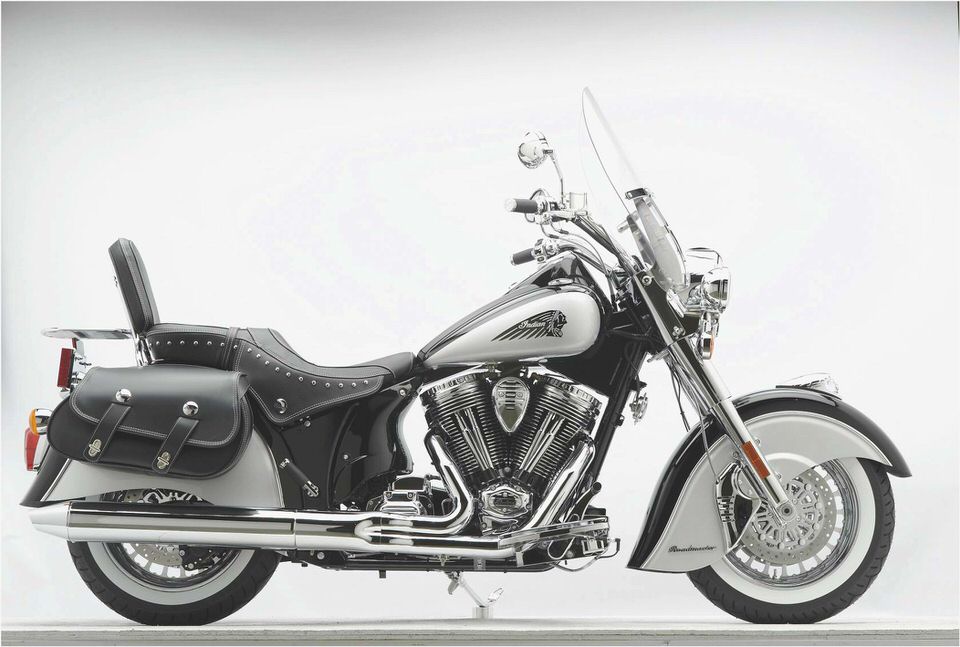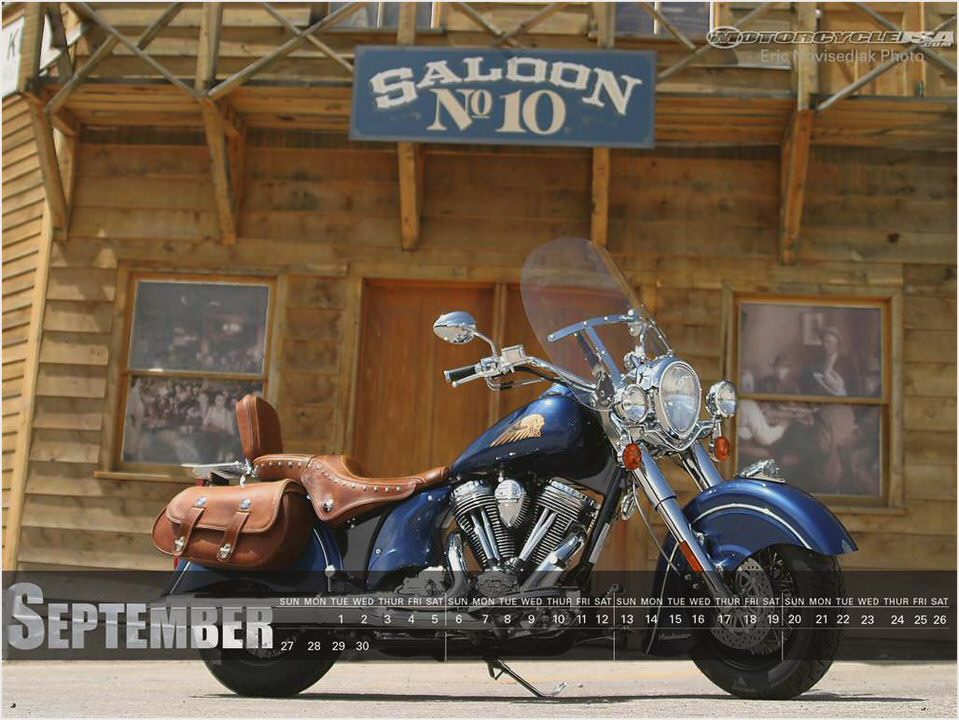
The Revival of
Indian Motorcycles
A once strong rival of Harley-Davidson Inc. is making a comeback after having stalled out in the marketplace for decades.
Indian Motorcycle Co. which made the first mass-production motorcycles in America, has been acquired by Polaris Industries, the Minnesota-based maker of snowmobiles, all-terrain vehicles and Victory motorcycles.
It’s the latest resurrection of a 110-year-old brand known for its Chief bikes that, decades ago, were considered some of the world’s best touring motorcycles. In its heyday, Indian also won accolades at the racetrack and was the first motorcycle manufacturer in the world to produce more than a quarter-million bikes.
That said, the original maker of Indian motorcycles went out of business in the 1950s and its bikes – with their signature Indian-head logos – became collectors’ items.
Numerous attempts to revive Indian have struggled, but the company might have its best chance through Polaris, a $2 billion company known for conservative business moves but remarkable growth.
Like Apple Computer, Polaris makes products that people crave, said analyst Craig Kennison with Robert W. Baird Co.
Kennison said he likes the Indian acquisition because it pairs the iconic brand with Polaris’ manufacturing expertise.
Financial terms of the deal were not disclosed. Polaris acquired Indian from Stellican Ltd. a British firm that revived the brand from near death in 2004 and is the parent of Chris-Craft boats.
Polaris executives said they hope to re-launch Indian in 18 to 24 months, which includes moving the manufacturing from Kings Mountain, N.C. to Spirit Lake, Minn.
Indian and Victory engines will be made at a Polaris plant in Osceola, in North Western Wisconsin. That plant was scheduled to close but now will remain open with about 60 jobs, far fewer than what it once had.
Indian had about $11 million in sales in 2010, barely a rounding error to Harley-Davidson’s $4.2 billion. The bikes, priced between $26,000 and $36,000, will get a thorough review before the re-launch, according to Polaris.
We have no intention of living in the past, but the heritage and style that Indian brings to Polaris significantly expands our target customer base, Polaris CEO Scott Wine said in a conference call with analysts.
We are not going to try and push Indian into all of our dealerships, but we are going to make a concerted effort to leverage the brand, along with Victory, in the top U.S. markets, said Michael Malone, Polaris’ chief financial officer.
Bikes come with a hefty price.
At the high end of the touring bike market, Indians compete with Harley-Davidson’s most expensive motorcycles, such as the $36,500 CVO Ultra Classic Electra Glide.
With Polaris’ manufacturing capabilities, the price might come down, said Bob Marchello, owner of an Indian dealership in South Elgin, Ill. the closest franchise to Milwaukee.
There are a lot of people who would buy an Indian but can’t afford one, Marchello said. With a price reduction, I believe we could see a crossover between Harley-Davidson customers and Indian.
Polaris says it won’t change Indians to become clones of its Victory motorcycles, which also are heavyweight touring bikes.
Both brands are unique enough to have their own identity, said Julie Newhauser, marketing director at Fuel Power Sports, a Victory dealership in West Bend.
Polaris’ on-road and Victory motorcycle division had $50 million in sales in the recent fiscal quarter, up 77% from a year ago. For the full year, Polaris expects a more than 50% sales increase for the division.
We will increasingly look beyond North America and Western Europe to drive expansions, Wine said.
But for U.S. customers, at least, it could take some convincing to give Indian another chance.
The brand languished under previous owners that included a private equity firm. Even in its prime, in the 1920s, Indian’s owners were accused of draining the company’s profits to support money-losing businesses.
In recent years, Indian was dogged by engine problems and a cutback in the number of dealerships.
I just don’t know if the brand has any credibility in the marketplace, said Chaz Hastings, owner of Milwaukee Harley-Davidson.
There isn’t one piece left of the old company from when it closed in the 1950s, Hastings said.
Indian Motorcycle Co. officials declined to comment for this article.


Optimistic for the future
Former Indian dealers say they might take the brand back, provided the terms are right.
This time around, I would not go into it with a wide-eyed approach, said Jim Puma, owner of a former dealership in Racine.
Puma still has Indian posters and other items in his motorcycle shop, although he no longer sells the bikes. He’s hopeful about Polaris acquiring the company, and he envisions dealerships selling Victory and Indian bikes.
Polaris is as steady as you can get, Puma said.
The acquisition could separate Indian from other niche motorcycle companies that struggled in the recession.
One of those companies, Big Dog Motorcycles, went out of business after a bank foreclosed on it.
Big Dog bikes often were bought by middle-age men, flush with cash, who wanted something other than a Harley-Davidson. The company once said some of its key customers were building contractors in Florida, California, Nevada and Arizona during the housing boom.
Big Dog hung in there longer than a lot of the niche bike builders. But the reality of the marketplace was that people were no longer buying these $30,000 motorcycles, said Bruce Tessmer, marketing director for SS Cycles, in Viola.
In the early 1990s, there was sometimes an 18-month waiting period to get a new Harley-Davidson. That fueled companies such as Big Dog, American Iron Horse and others that made chopper-style and cruiser motorcycles.
We rode that wave for quite a long time, said Tessmer, whose company once made engines for Indian.
Indian has ended production in North Carolina. But the company still has bikes at dealerships and a loyal, albeit small, following.
They are beautiful motorcycles, said Laurence Richardson, publisher of Clutch Chrome, an online motorcycle magazine.
I think Polaris is going to bring some fundamental design changes to Indian, too, because they have done so well with their bikes. If you are an Indian fan, this acquisition is only going to help you, Richardson said.
The brand will stay around longer now than it would have otherwise, he added.
ref. http://www.jsonline.com/business/120521079.html

- 2014 Indian Chief Classic: MD Ride Review …
- 2010 Indian Dark Horse & Bomber: Jaw Dropping Styling & Prices To Match!
- Orientation Edition
- CENSORED NEWS: Lakotas Prevent Blackhawk Helicopters from Landing at Wounded…
- 2014 Heritage Softail vs Indian Chief Vintage – Motorcycle USA
